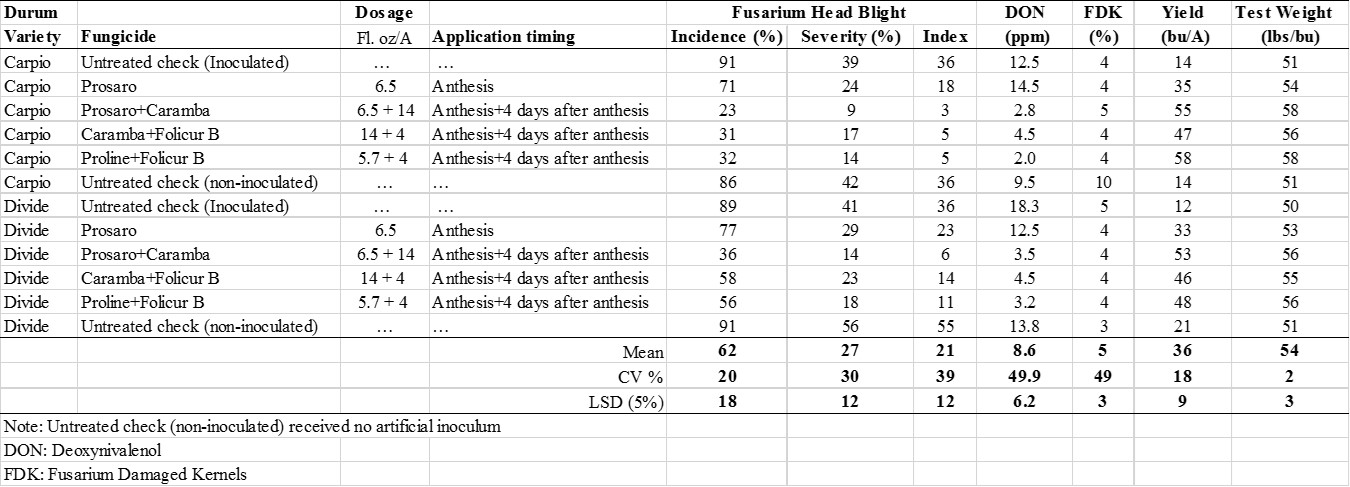Objective: To evaluate the efficacy of fungicides in single and sequential applications to manage Fusarium head blight (FHB) in durum wheat.
Methods:
Location: NDSU Langdon Research Extension Center.
Experimental Design: Randomized complete block with four replications.
Previous crop: Soybean
Cultivars of durum tested: Carpio and Divide
Planting: 1.2 million pure live seeds/A was planted on May 2, 2016. A border plot was planted between treated plots to minimize interference from spray drift.
Plot size: Seven rows at six inch spacing. 5 ft. x 20 ft., mowed back to 5 ft. x 16 ft.
Herbicides Applied: Prowl H2O (36 Fl. oz/A) + Sierra (1 Fl. oz/A) + Huskie (15 Fl. oz/A)
Inoculation: Plots were inoculated by spreading corn spawn inoculum at around boot stage (Feekes 9-10) at the rate of 300 g/plot.
Disease development: Supplemental moisture was provided by running overhead irrigation from Feekes 9 to 11.25 at the rate of one hour per day to create a conducive environment for FHB development.
Fungicide treatments: Fungicides were applied, with CO2-pressurized backpack sprayer with a three nozzle boom (XR-8002) and the water volume used was 20 GPA. Fungicide application was made at Feekes 10.51(anthesis) on July 11 and repeated 4 days after the first application (July 15, 2016).
Disease Assessment: FHB incidence was calculated by counting the number of heads showing FHB symptoms out of 50 heads that were rated for severity. FHB head severity was rated using 0-100% scale on arbitrary 50 heads, excluding two outer rows. FHB index (Index) was calculated using formula: Index = (SEV*INC)/100.
Harvest: Plots were harvested on August 24 with a small plot combine and the yield was determined.
Data Analysis: Statistical analysis was done using SAS. Fisher’s least significant difference (LSD) was used to compare means at p (α = 0.05). Actual means are presented in the table for simplicity of understanding.
Results:
Both durum varieties had the lowest FHB incidence, severity, index, DON content, FDK, and yield when treated with the combination fungicide treatments applied at Feekes 10.51 and repeated 4 days after the first application (Table 1) and were significantly different from the untreated (inoculated and non-inoculated) checks.
Table 1: Fungicides tested alone and in combinations on two durum varieties at two application timings to manage Fusarium head blight and evaluation of their influence on yield and other grain characteristics: toxin (DON) content, FDK, and test weight.
Acknowledgements: Bryan Hanson, Travis Hakanson and Lawrence Henry for their technical support
